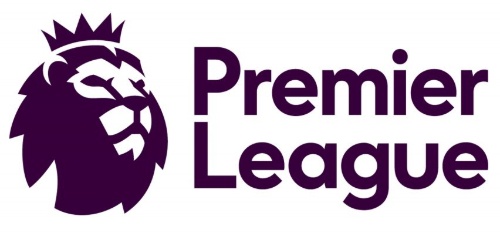How Much Does A Professional Soccer Player Make?
When we think of a professional soccer player, our minds are immediately drawn to elite players who compete at the top of the game…
The players who light up World Cups and the Champions League with their dazzling skills.
While players such as Messi, Ronaldo, and Neymar command the highest salaries and bring home the most money in terms of endorsements…
The reality is that the vast majority of professional players earn only a fraction of what these stars take home in just one week.
Professional players' salaries depend on a lot of factors such as the league they play in, the tax system they're a part of, and just how well they do when it comes to negotiating their deal.
Add in other factors such as performance-related criteria relating to cleansheet and goal scoring bonuses, promotion clauses and image rights and it can become complicated to gauge just how much players actually earn.
Let's take a look at a few leagues around the world to see just how much money a professional soccer player makes.

The Premier League (England)
One of the highest earning leagues in the world, the Premier League is almost without equal when it comes to the salaries it offers across all of its teams.
And this has only increased in recent years due to the huge TV broadcasting rights packages that the league has managed to negotiate around the world.
Indeed, even newly promoted teams such as Wolverhampton Wanderers and Fulham have managed to attract seasoned professionals to their clubs in the shape of European Championship winner Rui Patricio and World Cup winner Andre Schurrle.
This is unheard of at other low ranking clubs around Europe, and it goes to show the Premier League's purchasing power and the attraction of the salaries that its teams can offer.
So, just how much can a player expect to earn in the Premier League?
According to the Professional Footballer's Association in the UK, the average salary of a soccer player in the Premier League now stands at a whopping £50,000 a week.
It’s important to bear in mind that this number if offset by some players who earn much more than this and bring the average up significantly.
For example, the much maligned Man United forward Alexis Sanchez earns an incredible £350,000 a week - and this is not even including the £75,000 bonus that he gets for actually playing a match.
Other top earners at the club are Paul Pogba who takes home £290,000 per week and David De Gea who earns £200,000 per week as of the time this article was written.
At the other end of the Premier League, only Aaron Mooy earns the same amount per week as the league's average salary at recently relegated Huddersfield.
The rest of the club's players all earn between £10,000 – £35,000 a week and as they likely have relegation clauses included in their contracts, this will only decrease next season as they compete again in the Championship.

The Championship (England)
England's second division is quite an anomaly in comparison with other leagues in Europe.
It draws more viewers than a lot of top divisions around the continent and it has also signed very profitable TV rights deals to show the matches.
Teams also benefit from 'parachute payments' of £40 million per year when they are relegated from the Premier League (although this only continues for three seasons).
As such, the average weekly wage across the division stands at £7,500 – £8,500 with the highest earners taking home around £80,000.
Remarkably, this is more than what the average player in the Eredivisie – the top division in the Netherlands – takes home each week.
Although players at renowned clubs such as Ajax and PSV will certainly be earning more than that, a lot of soccer players across the division will be earning less that a player in the Championship.
Wages only continue to decrease the lower down you go through the leagues and in England's third division, confusingly named League One, players “only” earn between £1,700 – £2,500.
This drops to £1,300 – 1,500 per week in League Two.

Serie A (Italy)
In the 90s, Italy's top league was the Premier League of its day.
Players from around the world flocked to its shores, earning fantastic wages and putting in magical displays at top teams such as AC Milan, Internazionale, and Juventus.
In recent years it is La Vecchia Signora – Juventus – who have dominated Italian football, winning the last seven league titles.
They also look set to dominate the league for the foreseeable future, having signed Cristiano Ronaldo from Real Madrid in the summer of 2018. He is by far the top earner across the league, taking home an eye-watering weekly salary of €565,000.
Juventus also dominate the league when it comes to the salaries they hand out and only a few of their players take home less than €50,000 per week.
They also recently announced the capture of Arsenal's Aaron Ramsey on a free transfer and he'll join Juventus in the summer of 2019/20 when the deal at his long-term club expires.
Ramsey will be paid over €400,000 per week which is above his market value.
This demonstrates a recent phenomenon of players allowing their contracts to run down at their club so that they can sign for another team who then don't have to pay out a transfer fee for the player. They instead reward the player they sign with a larger contract and a higher weekly salary.
Of course, not all teams in Italy can offer anywhere near the wages that Juventus offer.
At lowly Chievo Verona, for example, the team's top earner is former Italy international Emanuele Giaccherini who takes home only €13,000 per week and most of the league's bottom team earn less than €10,000 a week.
Across the league, the average annual salary that a player can expect to earn in Italy stands at £1.33 million and this is almost half of what soccer players in England's Premier League earn in a year.
They all take home (on average) £2.6 million a year according to the Global Sports Salaries Survey.

La Liga (Spain)
While the country is home to two of the world's most famous soccer teams in Barcelona and Real Madrid, La Liga is also made up of tiny struggling teams such as Huesca and Rayo Vallecano.
As such, there is again a large discrepancy when it comes to salaries and what players can expect to earn at the top and the bottom of La Liga.
At Real Madrid for instance, Gareth Bale – one of the team's (and league's) top earners takes home €400,000 a week and this is after tax.
Indeed the majority of the star-studded team are on over €70,000 per week with captain Sergio Ramos bringing in €200,000.
Things look very similar over at Barcelona where players earn very high salaries across the board. All of them however are dwarfed by the whopping €655,000 a week that Lionel Messi takes home.
Things couldn't be more different at the bottom of the table where every player at Huesca earns less than €10,000 a week, with only Pablo Insua and Xabier Etxeita earning more than that.
While Rayo Vallecano are a bit better off, they too can only afford to have four players earning more than €10,000 per week and for their whole roster they only pay out €177,000 a week – less that what Ramos takes home in that time.
Conclusion
As you can see, salaries vary quite substantially between teams and leagues.
The top players in the world earn astronomical amounts while the vast majority of soccer players in the lower leagues take home a whole lot less.
At the end of the day, a player's salary reflects how good they are and what their worth is to the team, and this is reflected in the bonuses, image rights, and signing on fees that are involved.
If you're Lionel Messi you can command the highest salary in soccer...
But if you're a player in England's League Two, you may have to settle for a lot less.
For most people simply receiving any salary to play the sport they love is enough for them.
Further Reading: How to Become a Professional Soccer Player (10-Step Guide)

